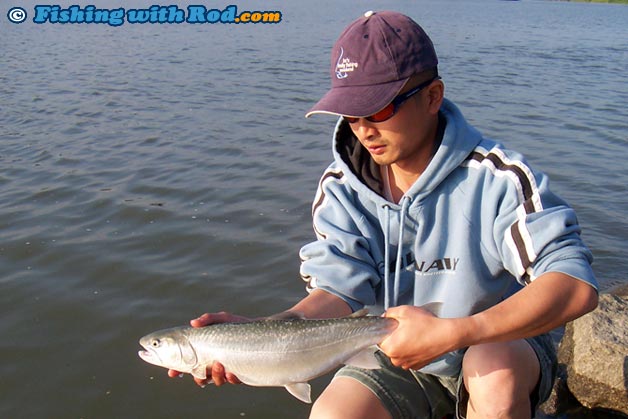Does Your Bait Work While Barfishing?
By Rodney Hsu, Fishing with Rod | Published in May 2004

The idea of sitting and staring at a rod tip for hours is a turnoff for many. That probably explains why I rarely bump into other anglers when I barfish in the estuary Fraser during spring and fall. So often, people would cast a piece of bait out, sit and wait for what seems to be eternity. After a few hours, they usually pack it in and conclude that there are either no fish or their bait simply isn't good enough. After experimenting with numerous types of setups over the years, I have discovered some patterns that may improve your success when baitfishing in the Fraser.
It really isn't about how good your roe is. Presentation of the roe is most likely the last thing the fish is concerned about. During spring months, freshet takes place in the Mighty Fraser. Visibility is down to almost zero, which means there isn't a chance that a fish can find a bait by sight. Instead of spending the time to colour and cure up roe, your effort should be focused on more important factors such as your rigging and timing.
One important component of the roe that shouldn't be overlooked is its firmness. The Lower Fraser is populated with small scavenging critters. If the bait is too fragile, then it is unlikely to stay on the hook for more than ten minutes after it settles on the bottom. Properly dried roe chunks can remain on the hook for hours even after the sculpins and other coarse fish peck at it.
Keep your bait small! The old saying, "Big bait catches big fish", does not necessarily apply in this case. A big bait would only translate into many small bites. A smaller bait allows the big fish to commit to it with one single take.
Personally I prefer to fish at locations where current is almost absent. This allows me to lighten up my gear. For spring jack, coho, bull trout, cutthroat trout and even chum, I employ a medium to light 8 feet spinning rod. My main line is between 6 and 8lb test. Out of all the rigs that I have tried, the threeway swivel setup (shown here) is my favorite so far. The threeway swivel is tied onto the main line, with a 30 to 40cm leader at one end. I tie a 40 to 60cm line that has a piece of lead attached at the end. The absence of current allows me to reduce the size of my lead. Normally, my lead is 1oz or less. A 1/0 hook is tied onto the leader. A big hook can both avoid the smaller fish and deep hooking of the big fish to prevent catch and release mortality. Finally, timing is extremely important. The estuary Fraser is completely controlled by the tide. My favorite period to fish is during outgoing tide. When the tide peaks and water becomes stationary, it becomes unproductive. Due to the lack of water flow, the scent of the bait is not being carried away, therefore fish are not being attracted to the bait.
There you have it, these techniques are simple, yet productive. Be sure to check for openings and related regulations before heading out as they are constantly changed in the Fraser River. Good luck!

